Smart CasualThe Transformation of Gourmet Restaurant Style in America
Smart Casual will transport readers to restaurants around the country to learn the secrets to their success and popularity. It is certain to give foodies and restaurant-goers something delectable to chew on.
Fine dining and the accolades of Michelin stars once meant chandeliers, white tablecloths, and suited waiters with elegant accents. The stuffy attitude and often scant portions were the punchlines of sitcom jokes—it was unthinkable that a gourmet chef would stoop to plate a burger or a taco in his kitchen. And yet today many of us will queue up for a seat at a loud, crowded noodle bar or eagerly seek out that farm-to-table restaurant where not only the burgers and fries are organic but the ketchup is homemade—but it’s not just us: the critics will be there too, ready to award distinction. Haute has blurred with homey cuisine in the last few decades, but how did this radical change happen, and what does it say about current attitudes toward taste? Here with the answers is food writer Alison Pearlman. In Smart Casual: The Transformation of Gourmet Restaurant Style in America, Pearlman investigates what she identifies as the increasing informality in the design of contemporary American restaurants.
Alison Pearlman is a Los Angeles–based art historian and cultural critic who blogs under the name the Eye in Dining. She teaches modern and contemporary art and design history at Cal Poly Pomona.
“If you have ever seen an open kitchen or enjoyed a tasting menu on a bar stool and wondered why, Smart Casual is certainly the book to read!”
-Wylie Dufresne, chef of wd~50
“Alison Pearlman knows not only what we want to eat, but where we want to eat it, and how we want it served. She shows us how we changed the food-service industry (and how it changed our expectations of it). The amazing thing is she does this in a book that informs, intrigues, and often amuses us. Who knew a book about business could be so delightfully tasty?”
-Gary Allen, author of The Herbalist in the Kitchen
“Alison Pearlman’s Smart Casual is a delicious romp through America’s rapidly changing and diverging restaurant scene. It begins with the old haute cuisine establishments frequented by the upscale, well-to-do diners, but concentrates on contemporary restaurants with their experimental, innovative, and exotic cuisines. It is an informative, witty, and delightful book brimming with hot anecdotes and tangy tidbits. It is a must read for all serious foodies.”
-Andrew F. Smith, Oxford Encyclopedia of Food and Drink
“Among all the books about shifts in American taste during the past few decades, this stands out as the most meticulously detailed, insightful, and well researched, including interviews and even first hand experience. Pearlman captures perfectly the shift in gastronomic sensibilities, the demise of stuffy white-tableclothed shrines, and the rise of good, honest food served without pretension. This study is erudite and hip, written with both verve and a keen analytical eye.”
-Ken Albala, author of Pancake: A Global History
“Alison Pearlman visits dozens of today’s restaurants and reports on how they meet contemporary expectations with fresh interior design, innovative cooking, and daring business plans. Culinary students and budding restaurateurs will definitely profit from Pearlman’s research.”
-Booklist
Making it Deluxe
While in Manhattan for research, I sampled as many relevant restaurants as I could. Ordering a “DB Burger” at chef Daniel Boulud’s DB Bistro Moderne (2001–) was on my shortlist. The dish had started what Josh Ozersky, in The Hamburger: A History (2008), calls the “Haute Burger Skirmish”—a highly publicized episode of one New York restaurant after another vying to claim the most luxurious hamburger.32
The haute burger epitomizes what I call the deluxe approach to gourmandizing common foods. Its main feature: the addition of costly ingredients.
For the DB Burger, which Boulud says he invented on a lark as proof that a French chef could outdo Americans at their own hamburger game, he made a tall burger of ground sirloin, stuff ed it with red-winebraised short-rib meat, and stuff ed that with foie gras and truffles. Extra pomp—perhaps also camp—came with the presentation. Just as I’d imagined from the lurid photos of food blogs, the burger arrived at my table with condiments in ramekins on a separate dish, and stood trophy-like on a plate next to a doily-mounted silver julep cup overfl owing with French fries (fig. 13). In 2003, the demand for this $29 burger inspired nearby Old Homestead Steakhouse to introduce a $41 Kobebeef burger, which led Boulud to counter with the “DB Burger Royale,” featuring three layers of Périgord truffl es, for $50. On it went as other restaurants joined in.33
The burger has been a favorite, but it’s far from being the only commonplace food that chefs have made deluxe. An example just as sensationalized as the DB Burger, in fact, but whose heyday in Manhattan I unfortunately missed, was the mac-and cheese John Delucie put on the Waverly Inn menu soon after becoming head chef in 2006. It remained the restaurant’s trademark and a subject of press amazement until Delucie left in 2010. Why the fuss? A heart-stopping heap of shaved white truffles and the dish’s initial base price of $55. Delucie qualifies this figure in his memoir The Hunger (2009) as “give or take a hundred for market fluctuations.”34 The ante has certainly been upped since 1988, when at San Francisco’s supper club Bix, chef Cindy Pawlcyn, in an early deluxe move, spiked her mac-and-cheese with lobster.35
Making it Pure
Given the stunning price tags sometimes associated with it, it’s easy to see why the deluxe approach has gotten the attention it has. Yet it’s not the dominant style of gourmandizing humble foods. More pervasive has been a sort of material and ethical purification of them. What I call the pure style has emphasized expressions of unadulterated nature and the chef’s true self.
To glorify the naturalness of their ingredients, chefs working in the purist style have made them seem relatively unrefined. They’ve maintained enough of the original structure of featured plants or animals for ready identification. They’ve then presented ingredients in loose, uncontrived arrangements. In some cases, they’ve offered dishes family style, on platters or in cooking vessels—likewise indicating minimal interference in the transfer of earthly bounty from chef to diner.
When it comes to cooking methods, purists have emphasized the time honored— roasting, braising, grilling—thereby stoking primitivistic ideals of hearth and fire.
When I traveled to the Bay Area, I visited the purist Zuni Café in San Francisco, where chef Judy Rodgers has run the kitchen to great acclaim since 1987. By the time it had won the James Beard Foundation award for Restaurant of the Year in 2003, Zuni had become especially famous for one dish that I believe epitomizes the pure style. So I made sure to order the “Chicken for Two Roasted in the Brick Oven; Warm Bread Salad with Scallions, Dried Currants, Red Mustard Greens, and Pine Nuts.”
The bird was served almost directly from the wood-burning oven, simply cut into legs, thighs, and breasts and dressed with the leafy bread salad. The rustic toss of bone-in chicken with rough-torn salad on a simple white plate gave the impression that nature and embers had done most of the work.
Pure cuisine often intimates this effect. But the look of straightforwardness can be deceptive. There are hidden reasons why Zuni’s roasted chicken may be the tastiest one could ever eat. The Zuni Café Cookbook (2002) reveals them. To prepare the dish, one must follow four full un-illustrated pages of steps. Not only is the process lengthy; for best results, one needs uncommon tools. And before any actual cooking, one must salt the bird for one to three days; moreover, while Rodgers tries to convince readers they can reproduce the dish in their home ovens, even she has to admit they won’t be imparting the distinctive “smoky flavor” contributed by Zuni’s singular brick behemoth.36 Only the appearance of pure cuisine need be simple and spontaneous.
Even so, there’s been a range in chefs’ expressions of connection to nature. Some have invoked back-to-nature ideals in a dish’s service trappings, its situation within a menu, or its environment. I experienced all three while eating the “Chargrilled Lamb Burger with Feta, Cumin Mayo & Thrice Cooked Chips” at Manhattan chef April Bloomfield’s the Breslin. This has been a popular item on the menu since the place opened in 2009.37
To set the scene: Bloomfield has been well known for her insistence on ingredients uncorrupted by modern industry. She sources from small farms with freely roaming livestock. Whenever possible, she buys local and seasonal products. A New Yorker feature on the chef spent several telling paragraphs following her search for a pig farm to meet her discerning standards.38 Pat La Frieda, boutique purveyor of top-quality, humanely raised meat to many of New York’s best restaurants, was saying a lot to a reporter for New York magazine in 2010 when he named Bloomfield his most demanding customer.39 Bloomfield herself said even more when, for the Breslin’s opening, she invited British chef Fergus Henderson to cook alongside her. Henderson is a leader in the “nose-to-tail” trend that’s gripped many a purist. His book, The Whole Beast: Nose to Nail Eating (2004), is a bible for those who want to restore the preindustrial practice of using all edible parts of an animal.40
Who would think midtown Manhattan an ideal place for transporting me back to nature? But the chef had managed exactly that by enveloping my lamb burger in layers of aesthetically effective context. As I ate at the Breslin, I was literally surrounded by nose-to-tail reminders. The couple to my left ordered a house specialty of stuffed pig’s foot (for two)—a colossus of calf and hoof—and to my right stood the large, oval dining table reserved for whole-suckling-pig dinners. What’s more, a section of the menu was devoted to house-made terrines, delectable deposits for the sundry parts of an animal.
The presentation of my lamb burger was a form of pastoral poetry. The weighty thing wasn’t penned in, on a rimmed plate, but unbound, on a flat carving plank, like the free-roaming animal it came from. The choice of wood was significant. A minimally processed material, it retains it’s link to nature. The “thrice cooked chips” echoed the bucolic theme. They were thick, oak-colored, roughhewn, and piled loosely into a squat, parchment-lined, miniature metal pail. Glistening by the table’s lantern, the little bucket conjured visions of old farm tools near wheelbarrows and creeks in Romantic English landscape paintings.
For conveying Romantic naturalism, other chefs have preferred a more reductive aesthetic. This reached its apogee at chef Tom Colicchio’s Craft (New York City, 2000–). The restaurant’s culinary minimalism was sufficiently impressive that in 2002 it received a James Beard Foundation award for Best New Restaurant. In 2010, after Craft had multiplied across the country, Colicchio was recognized again by the JBF with an Outstanding Chef award. Needless to say, on my tourof pure cuisine, the original Craft was a necessary stop.
Every aspect of a dish’s presentation there highlighted the quality of individual ingredients and suggested artistic restraint. There was an emphasis on singular cooking methods. The roasted suckling pig, to share, arrived in a roasting pan to assert its having been roasted. Beyond that, the animal appeared little handled. Parts had been cut and separated just enough to distinguish sections of the animal, thus keeping my focus on nature. The side dishes likewise starred a single ingredient. The heirloom tomato salad, for instance, consisted of only tomatoes in a light, colorless vinaigrette. Served on a plain white plate, the beauty of the dish followed from the extraordinary quality of the tomatoes and their selection in a range of naturally occurring sizes, contours, and colors.
Colicchio’s insistence that individual ingredients be the focus was also hardwired into the modularity of Craft’s menu. Diners had to build a meal from ingredients à la carte. The menu I kept divided ingredients by cooking method—“raw,” “cured/marinated,” “roasted,” “braised,” “sautéed.” This preparation can be isolated only if a dish requiresonly one type, or if the restaurant wants to feature only one to give the appearance of simplicity. The descriptions of dishes—“Island Creek oyster,” “octopus,” “quail,” “monkfish,” “beef short rib,” “swiss chard”—were similarly brief.
As if to justify the cost of minimal handling, the entire left-hand column of the menu yielded to the names of twenty-two different boutique farms from which the ingredients derived. While the kitchen did little to them, the amount of space used for naming the farms suggested considerable effort went into finding the best.
I found this list of farmers noteworthy also because it exemplifies one of the pure style’s long-standing attributes. Starting in the mid-1970s, purist chefs revolutionized the language of menus by consistently identifying ingredients and their provenance.
Prior to that, most leading restaurants in America tended to describe dishes by theme. For example, a 1955 menu from Manhattan’s the Colony listed the following items under “Poissons”: “La Sole Anglaise Bonne Femme,” “Les Goujionettes de Flounder Mural,” “Homard a l’Americaine,” “Les Grenouilles Provençale,” “Pompana Sauté Florida” and “Saumon Froid Parisienne [sic].” Theme names were just as pervasive on a menu from New York City’s Le Périgord from fourteen years later. Under “Entrées,” one reads such titles as “Grenouilles Provençale,” “Sole au plat Isabelle,” and “Entrecôte Marchand de Vin.” Note the similar phrasing on a menu from that city’s Le Pavillon a year after that: under “Poissons,” for instance, “Grenouille Provençale” and “Sole Anglaise.” Even Manhattan’s exceptional the Four Seasons, which had an ingredient-based menu language way before its time, caved to custom in the listing of some Continental offerings, as in “Farmhouse Duckling au Poivre” and “Beef Stroganoff .”41
When not by a theme, a dish might have been described by a cooking method, as in the case of “Broiled Baby Lobster Tails” on a menu of the famous Los Angeles restaurant Romanoff ’s from the 1960s. Yet even Romanoff ’s minded the usual terminology for other entries—for example, “Louisiana Frogs Legs Provençale” and “Casserole of Lobsterand Shrimps Newburg.”42
On the rare occasion that a top American restaurant mentioned an ingredient’s origins, it was usually to boast of its distant importation. Hence the luxurious connotation of the Romanoff ’s “Broiled Imported English Sole.”43
In 1976, however, menu language, like other means of signaling status, underwent a sea change. Jeremiah Tower’s “Northern California Regional Dinner” menu of October 7, 1976, at Chez Panisse, Berkeley, California, is widely acknowledged as the turning point.44 With descriptions such as “Big Sur Garrapata Creek Smoked Trout Steamed over California Bay Leaves” and “Walnuts, Almonds, and Mountain Pears from the San Francisco Farmer’s Market,” Tower introduced what have since become pervasive features of gourmet menu writing: describing dishes by constituent ingredients, naming ingredients’ places of origin, and emphasizing local sources.
Reprinted with permission from Smart Casual: The Transformation of Gourmet Restaurant Style in American by Alison Pearlman, published by the University of Chicago Press. © 2013 by Alison Pearlman. All rights reserved.


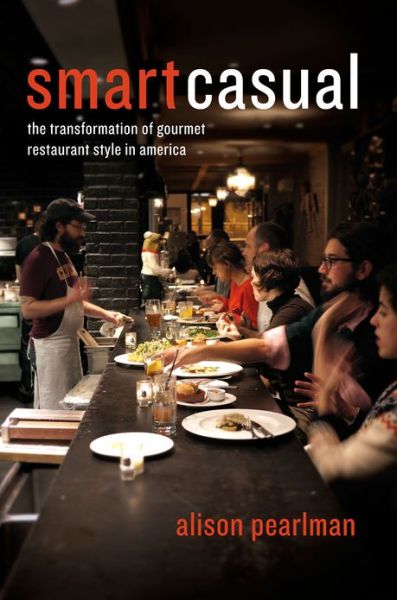


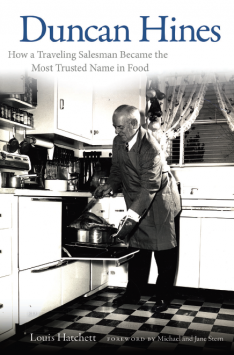
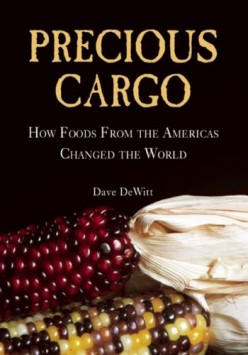
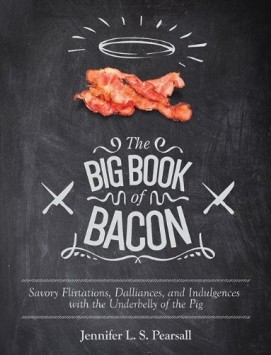
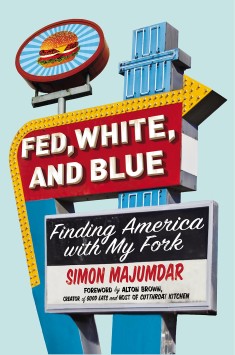
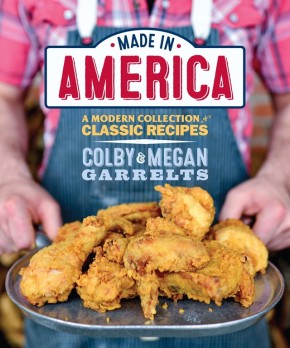
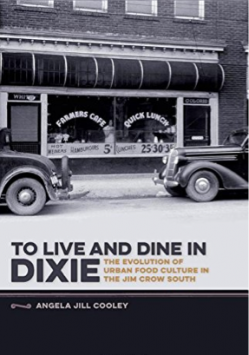
Leave a Reply